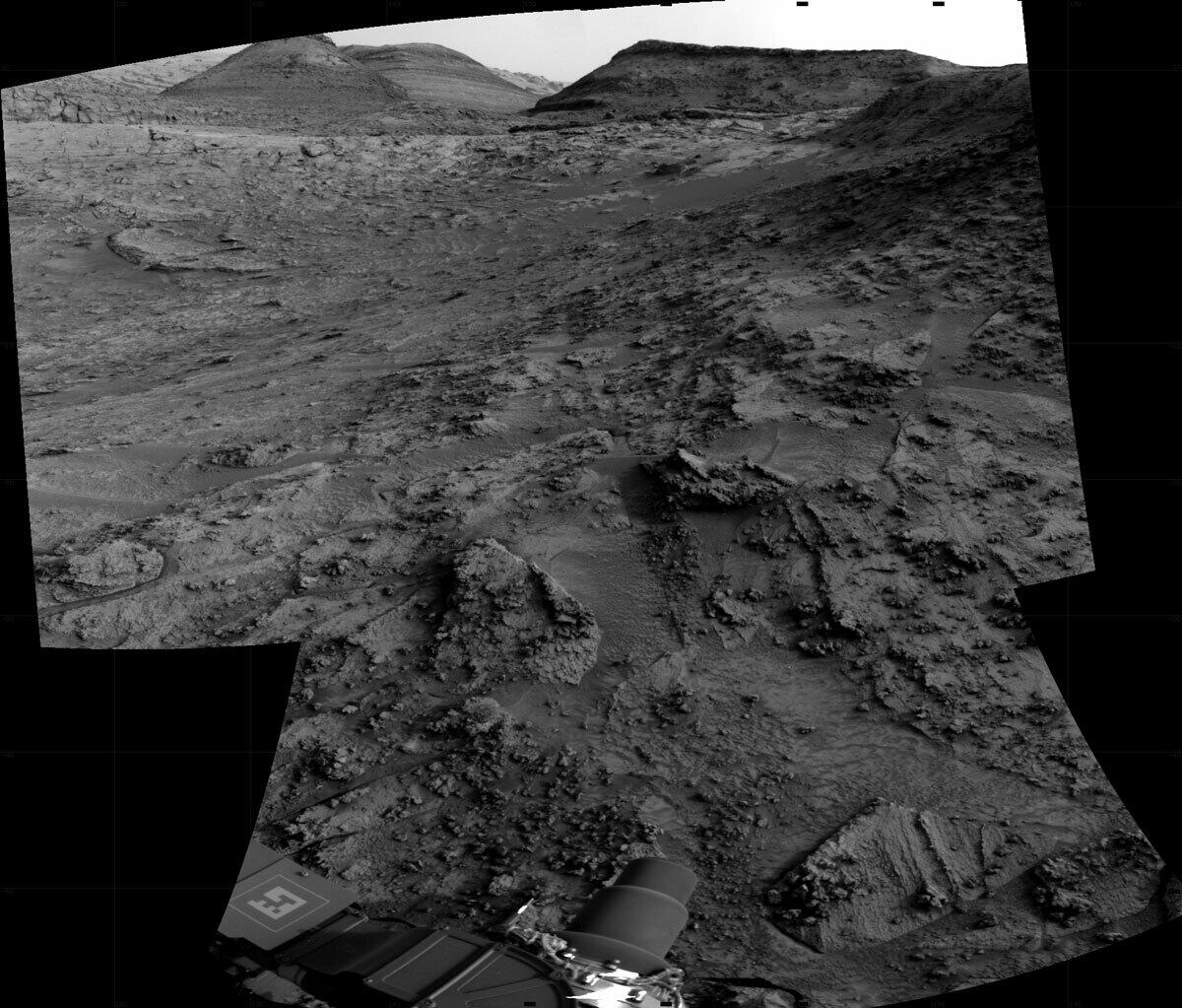Curiosity Blog | Sols 3485-3486: Blast a Knob!
The Sol 3483 drive completed as planned, positioning the rover near several outcrops of knobby material and more "normal" looking bedrock. The tactical uplink team discussed various options and decided to focus this plan's observations on the knobby material.
Unfortunately, timing constraints precluded an APXS integration today, as the instrument temperature would be too high to provide high-quality data. On the brighter side, removing the APXS activities from the plan freed up time for other activities, including a small MAHLI mosaic of a knobby outcrop. The knobby material is too rough to brush clean using the DRT, so we decided to shoot ChemCam's laser at a knob named "Cabo Sobral," expecting that the expanding plasma cloud generated by the laser will blow dust off the surface of the knob. Laser-induced dust clearing has occurred throughout the mission, and is therefore a viable alternative to DRT brushing.
The Sol 3485 plan starts with a Mastcam measurement of the dust content of the atmosphere above MSL and a large Mastcam mosaic extending coverage of the "Deepdale" hills toward the southeast, followed by the ChemCam 5-point raster on Cabo Sobral and Mastcam stereo observations of nearby trough features and a multispectral Mastcam observation of the (hopefully) cleaned surface of Cabo Sobral. Then Navcam will search for clouds and dust devils before MAHLI acquires a 3-frame mosaic from about 25 cm and a stereo image pair from about 7 cm of Cabo Sobral. The arm will then be stowed before a ~50-m drive toward the southeast. A SAM preconditioning activity is planned later that evening, followed by a DAN passive measurement.
The second sol of the plan starts with another DAN passive measurement and a ChemCam AEGIS activity, which will automatically select a bedrock target for a LIBS observation in the new rover location. Finally, MARDI will take an image of the ground behind the left front wheel during twilight.
Written by Ken Herkenhoff, Planetary Geologist at USGS Astrogeology Science Center
Get Our News
These items are in the RSS feed format (Really Simple Syndication) based on categories such as topics, locations, and more. You can install and RSS reader browser extension, software, or use a third-party service to receive immediate news updates depending on the feed that you have added. If you click the feed links below, they may look strange because they are simply XML code. An RSS reader can easily read this code and push out a notification to you when something new is posted to our site.


